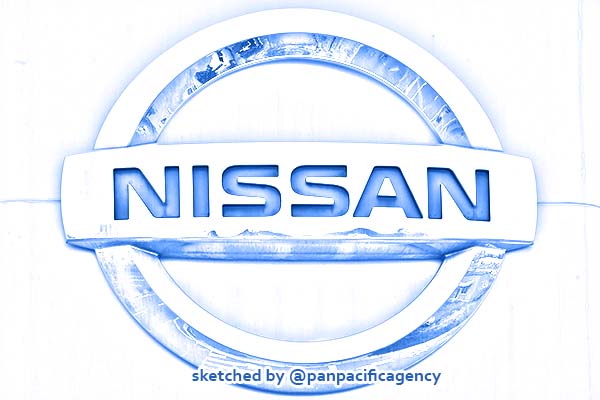Nissan to offer partial driving automation standard on new cars

File photo taken in February 2019 shows the logo of Nissan Motor Co. (Kyodo). Sketched by the Pan Pacific Agency.
TOKYO, Oct 8, 2020, Nikkei Asia. Nissan Motor will equip all future vehicles with basic automated driving functions, aiming to release more than 20 such models by fiscal 2023. The technology will enable Nissan’s more expensive models to be operated hands-free on the highway, while low- to midprice cars will be able to track vehicles in front of them, Nikkei Asia reported.
Nissan will release more than 20 models worldwide with self-driving functions, hoping to sell 1.5 million such vehicles a year by fiscal 2023. Countries and regions without the necessary highway infrastructure will be excluded.
The carmaker introduced its ProPilot 1 technology on some models in 2016. This allows cars to automatically follow the vehicle ahead during highway driving.
Last fall, Nissan rolled out a new Skyline sports car equipped with updated ProPilot 2.0 technology. This offers the world’s first driver assistance system combining highway navigation with hands-free driving capabilities.
Its new electric vehicle, the Ariya, scheduled for release next year, and other higher priced cars will be equipped with ProPilot 2.0, while less expensive models will have the first-generation technology as standard equipment.
Along with the new driver assistance system, Nissan is also developing image processing technology with the help of Israeli autonomous driving startup Mobileye. This recognizes the vehicle’s position as well as that of surrounding cars.
The auto industry classifies autonomous driving technology into five levels, with Nissan’s ProPilot technology considered level 1 or 2. At this level a human driver is still the car’s main operator. Waymo, the U.S.-based unit of Google parent Alphabet, and Uber Technologies are moving ahead with development of level 3 autonomous driving despite being unable to guarantee its safety as yet.
Level 2 automated driving includes a number of driver assistance functions, such as steering, acceleration, and braking, which it can perform automatically in specified situations. Level 3 automation systems can make their own decisions according to changing conditions, but require a human driver to be able to take control of the vehicle at any time.
Nissan has decided to install a simplified version of the new system as a standard feature, believing this will help it collect data and lower the cost of components.
Rival Japanese carmaker Toyota Motor has installed automatic tracking technology in 60% to 70% of its vehicles sold in Japan. It will equip its Lexus LS luxury sedan, scheduled for release later this year, with hands-free driving technology as optional equipment.
Tesla’s less expensive Model 3 vehicle will also have automatic tracking and lane-keeping functions as standard equipment. More advanced features will be optional.
According to a research company, self-driving cars with level 1 or higher functions will be found in 80% of all cars sold by 2030. In 2018, the technology was present in only 20% of new cars. However, even by 2030, most cars will still be equipped only with level 1 or 2 automated driving technology.